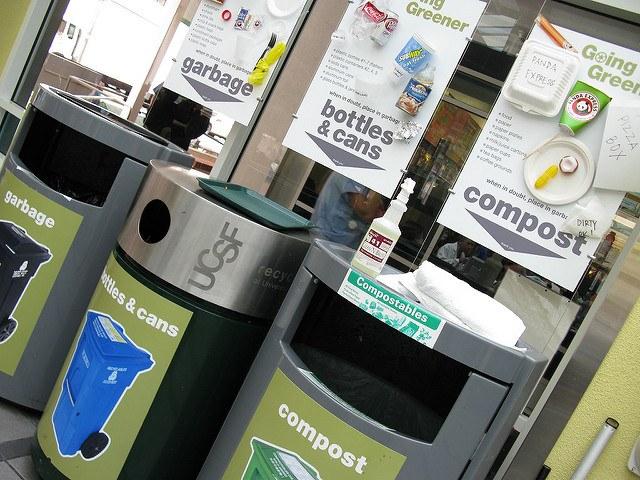
California has long basked in its reputation as a sustainability leader. From its booming solar sector to its cap-and-trade program, the Golden State sets environmental standards that others strive to follow. But a series of trends threaten to have California fall far short of its 2020 goal to recycle 75 percent of its municipal waste. And as is the case with the rest of the country, the state is struggling to recycle the easiest items, such as single-use disposable containers.
After several years of a steady decrease, the amount of garbage sent to California's landfills spiked to over 33.2 million tons last year, an increase of approximately 2 million tons. The Los Angeles, San Diego and Inland Empire areas saw the largest spikes in waste disposal tonnage, though most of California saw recycling decline while landfill disposal increased. The bottom line is that after several years witnessing the state recycle over half of its trash, that rate fell to 47 percent, the lowest in several years.
The state's population has gradually increased, after taking a dip during the aftermath of the 2008-2009 fiscal crises. Meanwhile the economy improved, motivating more Californians to buy more goods. The results: 44 million more tons of trash ended up in landfills, while 24 million fewer tons were recycled in 2015 than in the previous year. And in environmental terms, that means 200,000 more metric tons of carbon emissions were emitted into the atmosphere.
Several forces are contributing to this reversal. First, as mentioned earlier, more residents are enjoying the benefits of a recovering economy, so they are buying more things. But the slump in oil prices also means that companies are not motivated to buy materials such as plastic resins derived from recycled material if conventional options are cheaper. Meanwhile, after years of a commodity boom, other raw materials are at their lowest prices in years. With virgin materials cheap, the bottom has dropped out of the recycling market, even in the eco-conscious Bay Area.
The effects were felt across the state as hundreds of recycling centers closed. Even before the mass closings, materials such as glass and plastic have never compensated for the expenses incurred in collection, so the state of California has long subsidized those costs. Many recycling centers therefore chose to close their doors, which puts even more pressure on the state's waste-diversion agenda. California has the luxury of sending less than 1 percent of its garbage to landfills out of state, and that option is not slated to see an increase at any point soon.
As a Guardian report earlier this month revealed, the closing of recycling centers not only adds to California's environmental woes, but also hits the state's poorest residents the hardest. Scooping plastic bottles and cans out of the trash is the last thing the vast majority of residents want to do, but for some of the most vulnerable in society, collecting recyclables is a way to get by -- and is even a badge of pride for those who would rather not be reliant on the state for any means of social welfare. Alexander Sammon, an editor at Mother Jones, suggested that recycling provides the state as much as $9 million in revenues and 3,000 jobs; watch for those figures to plunge if there is no turnaround.
As of now, California has no solution for this growing problem. Clearly the state's CRV (California Refund Value) fees on all disposable containers, which vary by the size of each bottle or can, is not helping. Based on what's being purchased at a Costco or any big-box store, it seems most Californians are not sensitive to the tax imposed on each individual container. A higher surcharge could motivate residents to return those bottles and cans in order to gather their refunds, a common routine in much of the nation when bottle deposits were the norm until the 1970s.
But new habits, including those created out of convenience, are resistant to change. Until someone finds an answer, watch for the cost of both garbage collection and environmental cleanup to surge in the long run.
Image credit: Frank Farm/Flickr

Leon Kaye has written for 3p since 2010 and become executive editor in 2018. His previous work includes writing for the Guardian as well as other online and print publications. In addition, he's worked in sales executive roles within technology and financial research companies, as well as for a public relations firm, for which he consulted with one of the globe’s leading sustainability initiatives. Currently living in Central California, he’s traveled to 70-plus countries and has lived and worked in South Korea, the United Arab Emirates and Uruguay.
Leon’s an alum of Fresno State, the University of Maryland, Baltimore County and the University of Southern California's Marshall Business School. He enjoys traveling abroad as well as exploring California’s Central Coast and the Sierra Nevadas.














